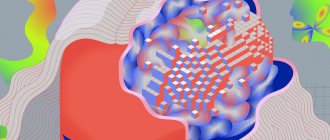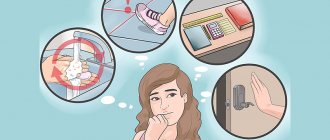Borderline Personality Disorder (or BPD
) is a rather rare mental destruction, characteristic of only 2-3% of people around the world. The pathogenesis of this type of psychopathy is usually accompanied by the presence of a complex of unfavorable factors.
It is quite difficult to recognize this type of disease in everyday life. Often, it is confused with narcissism or simply the bad character of an individual, since the behavior of “border guards” can be characterized by an extreme degree of unpredictability and hysteria, as well as a tendency to manipulation. For example, they confess their love to their partner, and after a couple of hours they leave “forever”; they can sincerely sympathize with someone, and then hit. It is also very common for patients of this type to constantly violate the boundaries of other people, shifting their problems onto them and avoiding responsibility. Let's look at the symptoms of borderline in more detail.
What is borderline personality disorder?
The instability of the psyche, which is called borderline personality disorder - what it is, and how dangerous the condition is, can be characterized by the fact that a tenth of those suffering from the disease commit suicide.
People with borderline disorder are prone to high levels of anxiety for any reason, aggression, and emotional instability. In the acute phase, patients cease to control their actions and actions and become dangerous to others and themselves.
To understand what BPD is, it is necessary to recognize that it is a serious and distressing disorder that is often characterized by suicidal thoughts and conscious self-harm.
A few facts about borderline personality disorder:
In most cases, patients with BPD do not believe in their strengths and skills and consider themselves unattractive in appearance. Those suffering from the disorder are often infantile, overly sensitive to negative evaluations, it is difficult for them to interact and self-actualize in a social environment, and their condition largely depends on the circumstances and people around them.
The disease being described - borderline personality disorder - DSM-5 (American diagnostic system for mental disorders) and ICD-10 (international classification of diseases adopted and approved by WHO) are considered one of the types of emotionally unstable personality disorder.
American specialists of the second half of the 20th century identified BPD in psychiatry to a certain place - between psychosis (a disorder of mental activity when a person’s reactions do not correspond to the situation) and neurosis (a hysterical state that arose against the background of psychological trauma).
Unfortunately, borderline mental disorders are becoming increasingly common in the modern world. The spread of the disease indicates the serious nature of the problem.
Pathogenesis of BPD
The pathogenesis of the disease lies in incorrect or incompletely formed intrapersonal awareness of oneself, in other words, “self-identification.” Borderlines have difficulty understanding how they relate to major areas of life. They have problems with the concept of their opinions, interests, hobbies and their character as well. This is where the more common definition of the disorder – “borderline” – came from. In this aspect, it means maneuvering on the line between psychopathy and a stable state. The word “borderline” in this particular case means a precarious state between the norm and deviation, as if a person lives on the border between “mental illness” (psychosis) and “mental health”. That is why the slang name for patients of this type is “borderliners” (from the English expression “border line”, which literally translates as “border”).
In classical psychiatry, borderline personality disorder is also classified as a type of ego-syntonic disorder. Ego-syntonicity implies that the patient does not evaluate his condition as painful, is not critical of it, and calmly accepts deviations in behavior, without considering that they harm him in any way. Moreover, the patient seems to “defend” his symptom, preventing his own healing due to the difficulty in identifying his own “I”.
Classification of borderline disorders
Let's look at what the classification and stages of development of borderline disorder look like.
In the work of American psychologist and researcher Theodore Millon, the following types of borderline personality disorders are identified:
1. BPD “Dejected” - in this case, a person feels depressed, often feels danger, hopelessness, helplessness, behaves very modestly, and is not confrontational.
2. BPD “Touchy-feely” - at first the person may be defiant, impatient, and negative. Then he quickly becomes offended and becomes gloomy and pessimistic.
3. BPD "Impulsive" - antisocial hysterical behavior. The person behaves capriciously, nervously, irritably, irritably, deliberately flighty, gradually becomes gloomy, and sometimes prone to suicide.
4. BPD “Self-injurious” - characterized by a depressive state and masochistic tendencies. The person becomes withdrawn, embittered, gloomy, rigid, prone to self-punishment and suicide.
Theodore Millon was against the term “borderline” in naming the disorder. The personality disorder researcher believed that patients come to BPD in different ways, but it is always the result of a worsening of a previous, less pathological and less destructive mental disorder.
Theodore Millon read more on Wikipedia.
There are three stages of development of borderline disorder:
1. Easy stage. A person copes with responsibilities socially and professionally, although at certain stages he may have difficulties. Noticeable difficulties appear in establishing and maintaining relationships with other people. A person at this stage does not cause serious harm to himself or others.
2. Middle stage. A person experiences problems at different stages of life and activity. The emergence of problems and conflict situations, as a rule, is provoked by the patient himself. At this stage, a person may pose a danger to himself and to other people. The degree of possible harm is not predictably life-threatening.
3. Difficult stage. A person is not able to function normally in society, is not ready to fulfill professional and social responsibilities, and has serious problems in relationships. His behavior can cause damage and pose a threat to the life and health of himself and others.
Borderline mental state in psychiatry and severity of personality disorders
In clinical psychiatry, three levels of mental disorder are traditionally distinguished:
- Neurotic
. This includes neuroses of various types, implying reversible temporary conditions that can be treated. - Psychopathic
level. In its plane lie personality disorders, which include character anomalies of various pathogenesis or painful changes in his traits, with which nothing can be done, since they relate to the personal structure of the individual. - And finally, the deepest damage to the psyche manifests itself at the psychotic
level. This includes manifestations such as delusions, hallucinations, and twilight consciousness.
In modern psychoanalysis, there are 4 levels of deviations. Between the state of psychosis and neurosis the “ borderline”
level", also called
borderline state
. A borderline state can mean both the disorder itself and a designation of the level of mental damage.
Symptoms of Borderline Personality Disorder
Symptoms of borderline disorder appear as reactions to quite ordinary life events and situations. The typical behavior of “border guards” is unstable. A vivid emotional affective reaction to current events remains at its peak for a long time and very slowly returns to normal.
The following symptoms may occur with borderline disorder:
- attacks of causeless anxiety;
- feeling of emptiness;
- impulsive actions that contradict logic;
- feigned friendliness, abruptly replaced by anger and aggression;
- inappropriate reactions, delusional ideas;
- weakening and loss of self-control;
- heightened reaction to moderate criticism, reminiscent of paranoia;
- chronic feelings of melancholy, boredom, instability in interpersonal relationships;
- violation of self-identification;
- extreme alcohol consumption, drug use;
- desire to cause oneself physical pain (selfharm);
- suicidal thoughts.
The actions of those suffering from BPD may be impulsive and self-destructive - promiscuity, alcoholism, carousing, dangerous driving, theft.
BPD sufferers are people with impaired social mental adaptation. In some cases, they experience symptoms similar to dementia. In others, the behavioral symptoms are similar to schizophrenia. When exhibiting signs of the disorder, patients behave dangerously and may cause harm to themselves and others.
The famous German psychiatrist Sigmund Freud compared the symptoms indicating how borderline personality disorder manifests itself to the manifestation of hysteria.
Patients with BPD may have trouble accepting information. They often cannot adequately assess the event. Situations where “everyone is wrong” except the patient himself are indicative.
People with BPD tend to be intensely emotional in their feelings. Against the backdrop of relationships with other people, they may experience intense shame, debilitating anxiety, deep sorrow for completely “average” reasons, nervousness turning into panic, rage instead of normal irritation.
Criticism towards them, failure or refusal of their request can provoke an exacerbation of the condition. During peak periods, patients are capable of causing physical harm to themselves, and particularly sensitive patients experience suicidal thoughts.
There has been a tendency for those suffering from borderline disorders to go “from one extreme to another” in situations and relationships. An intense feeling of cheerfulness and euphoria is suddenly replaced by deep anxiety, melancholy and anger, love can be replaced by disgust.
At first they idealize and highly value people, and then they become sharply disappointed in them and suffer greatly because of this. But still, emotional lability (swings of moods and states) in patients with borderline disorders is more manifested by a change in anxiety with depression, irritation with aggression, and despondency with deep melancholy.
People suffering from borderline disorders are extremely unstable and are characterized by destructive behavior - unjustified risks, promiscuity, dangerous driving, carousing, theft, etc. At certain moments, patients may deliberately cause themselves physical pain (cut themselves, burn themselves) in order to relieve emotional “heaviness” and tension.
The main concern is the patient's condition, when suicide attempts are possible. According to some estimates, more than half of people with BPD, either demonstratively or due to depression, try to commit suicide at least once. Patients cite the reason for a suicide attempt as a desire to “get away” from mental pain and relieve “unbearable emotional stress.” When attempting suicide, patients are usually guided by the belief that “it will be better for others.”
It is assumed that a significant proportion of people who voluntarily died may have had undiagnosed borderline personality disorder.
There are other signs of BPD, such as narrow food preferences. A person can eat only one dish, and the smell or sight of any other food will cause attacks of nausea and vomiting.
In some cases, patients with BPD have problems with their “I”, with identifying their personality, and feel empty and lost. When the patient does not “feel” himself, he cannot answer the questions: “Who am I? Why am I here? Why do I live?
The disturbance of self-identity in BPD is sometimes characterized by the perception of oneself as non-existent, and sometimes patients feel themselves to be “evil incarnate.”
Of those diagnosed with borderline personality disorder, the majority are women. This can partly be explained by the fact that in society, aggressive behavior of men is treated as habitual.
According to statistics, women are more often diagnosed with borderline personality disorder; symptoms in women are manifested by excessively high demands on a husband or partner, uncontrolled spending of money and casual sexual relationships. It has been noted that women with BPD in relationships are afraid of being rejected, they make excessive demands on themselves and their “other half”, they tend to underestimate themselves, and in emotional moments they can injure themselves. Some representatives of the fair sex are prone to overeating due to borderline disorders.
American actress, singer and sex symbol of the middle of the last century, Marilyn Monroe was considered the favorite of men and the envy of women. At the same time, the actress was alcohol dependent and suffered from severe anxiety, low self-esteem and fear of abandonment.
Against the background of dissatisfaction with their own appearance and self-rejection, some women develop borderline personality disorder and anorexia. Anorexia in this case has psychological causes, and a woman’s self-esteem depends solely on her weight.
Patients with BPD are often infantile, do not have the opportunity to self-actualize in a social environment, have problems in relationships with other people, and their condition largely depends on the circumstances and people around them.
Most of those who suffer from a psychological personality disorder cannot build comfortable relationships in a team and are not able to make a career. Many people are hampered by low self-esteem and find it difficult to believe in themselves. At the same time, the requirements for surrounding people, conditions and attention to oneself in patients with BPD are often excessive.
Symptoms of BPD are always family problems. The home where a person with borderline disorder lives will always be not a “safe haven”, but a “powder keg.” The relationship will be full of emotional breakdowns on the part of the patient. Sometimes, at the most crucial moment, a person suffering from a disorder, dramatizing the situation, creates a “worldwide” scandal over a trifle, insults and humiliates his loved ones. This behavior can be attributed to bad character or “something found.” But problems become systemic, behavioral patterns repeat themselves, and interfere with the lives of those around them and the person himself. Relatives of patients with BPD are helpless and may become depressed; for children, this behavior of relatives is fraught with serious consequences of maladjustment. What we call "bad temper" in this case is a symptom of borderline personality disorder.
Every person who has encountered similar conditions described is interested in how to understand that you have borderline personality disorder. In order to diagnose borderline disorder, professional help is required and you need to see a doctor.
How to help yourself or a loved one at home
What is borderline personality disorder Photo: Depositphotos
In short, the essence of home help comes down to three things:
- Calm down;
- Learn to control your impulse;
- To communicate with people.
Let's look at how to implement this in practice.
Tip 1. How to reduce emotional intensity
A person with BPD has low self-esteem. He seems to feel guilty for what happened to him in childhood and is happening now. Therefore, he is afraid that others will find out who he really is. In such a situation, it is important not to suppress your feelings and emotions, but to experience them without judgment or evaluation:
- Observe the emotions, as if from the outside - imagine that these are waves that come and roll back;
- Focus on physical sensations during emotions;
- Accept all your sensations;
- Realize that as soon as you allow yourself these feelings, they will no longer be so acute.
The second exercise that will allow you to quickly calm down is to influence your senses. Use different strategies in different emotional states.
- If you feel depressed, indifferent, lethargic, rinse your hands with cold or warm water, hold a piece of ice or squeeze any object, the edge of furniture, as tightly as possible.
- If you need to calm down, take a hot bath or shower, hug your pet, or wrap yourself in a blanket.
- If you feel empty, slowly eat a mint candy or a dish with an intense smell and taste - for example, something salty or spicy. If you need to calm down, drink hot mint tea or eat hot soup.
- Aromatherapy effectively helps bring emotions back to normal. Use scented candles, your favorite perfume, citrus fruits, spices, incense. Smell the flowers.
- Focus on a picture or photograph that catches your attention. Admire the beautiful landscape outside your window or simply imagine a place where you would like to be.
- Sounds will help you get rid of depression. Turn on loud music and blow a whistle. If, on the contrary, you need to calm down, listen to the sounds of nature: the sea surf, the sound of the forest, the singing of birds - all this can be easily found on the Internet.
Not everyone responds to sensory sensations the same way. Therefore, you need to try different options and determine the most effective ones for yourself.
With borderline personality disorder, any situation can trigger negative emotions. To minimize negative factors, try to follow simple rules:
- Get enough sleep;
- Exercise;
- Balance your diet - your diet should contain complex carbohydrates, proteins and fats in the correct proportions. And as little sweets, fast food, sweet carbonated drinks and processed foods as possible;
- Learn to meditate to relax.
Tip 2. How to control your impulse
Impulsivity occurs when heavy thoughts take over. To escape from mental pain, a person causes himself physical pain or goes into extreme sports - dangerous driving, casual sex, drunkenness. He feels better for a short time, but does not solve the problem globally.
As an ambulance, we recommend several techniques that will help you quickly relieve stress - and this is the first step to learning to control your emotions.
- Find a quiet, private place and sit comfortably. Focus on the sensations in your body - feel your arms, legs. Take a few deep breaths in and out. Watch your breathing carefully. After some time, the stress begins to release.
- Take a deep breath, fill your lungs to capacity with air and exhale in a slow stream. Repeat ten times.
- After inhaling and exhaling deeply, hold your breath. Count to twenty. After this, try to hold on for a few more seconds. And when you are already at the limit, start inhaling in a thin stream and imagine how the air gradually fills you. Repeat the exercise three to four times. Its essence is to switch the brain from emotional experiences to physiology - when there is not enough air, the body must save itself.
- After breathing exercises, consolidate the result with sensory sensations: listen to your favorite music, smell soothing aromas, hug a cat or dog. An interesting movie, workout, or walk will help you calm down faster.
Tip 3. How to consolidate your results through communication
Communication is the third key to helping with borderline personality disorder. And it needs to be used in conjunction with the first two – reducing the intensity of emotions and controlling impulses.
It is important that a person with BPD communicates with those he trusts - talks about his old and new feelings. About what has changed after performing techniques and meditations. This method helps you quickly escape from difficult thoughts.
Causes of Borderline Personality Disorder
Experts identify different causes when it comes to borderline personality disorder. The reasons for this can be external and internal. Possible external causes of the development of borderline personality disorder include emotional shock, loss of a loved one, the situation “between life and death,” physical and sexual abuse, and childhood psychological trauma.
Statistically, borderline disorders are much more likely to occur in people who experienced verbal, emotional or physical abuse as children. Incest may have occurred in their childhood. Many patients lost parents when they were children.
A common point of view on the occurrence of BPD is that a person did not experience the love of his parents during the growth and maturation stage. Cruel treatment of a child is highly likely to influence the formation of borderline syndrome. However, some experts refute this hypothesis, citing as an example many children who were “disliked” in childhood, who have adapted perfectly to adult life and do not experience psychological problems.
Excesses in strict parenting can also lead to the appearance of borderline disorders. Lifestyle, environment and various social factors must be taken into account when studying the causes of the disorder.
Before going to school, children undergo psychological testing without fail. Parents should pay close attention to testing and not neglect professional opinion, hiding behind the belief “my child is the best.”
Among the internal factors causing borderline syndrome are heredity. According to statistics, most patients with borderline disorder have relatives who suffer from similar illnesses to one degree or another.
Alcohol addiction and depressive disorders, which are provoking factors for the manifestation of BPD, are inherited.
Psychological borderline disorders are more common in people with high levels of emotional sensitivity. Anxiety or depression, which often accompany patients with BPD, can be caused by a disruption in the levels of neurotransmitters - serotonin, norepinephrine, melatonin, dopamine.
Scientists have recognized that alcohol dependence in BPD can develop against the background of a deficiency of the “happiness hormone” - serotonin. Alcohol can act as a kind of substitute for serotonin.
Factors contributing to the occurrence of BPD:
▪️According to scientific evidence, borderline disorder and post-traumatic stress disorder are interrelated. The causes of borderline personality disorder may be hidden in the biochemical composition of the blood. Stress disrupts the body's biochemistry.
▪️A life-threatening situation can change the system. A person who has been in a car accident cannot bring himself to get behind the wheel. And this is not just panic fear. The biochemical cause in this case most likely lies in a defect in the balance of neurotransmitters.
▪️The causes of BPD may be hidden in the failure of the hormonal system. It happens that when the thyroid gland is not functioning properly, a person imitates borderline disorder by his behavior.
The occurrence of borderline personality disorder syndrome can be affected by a banal lack of sun. It is a known fact that people suffer most from depression and anxiety in the northern regions.
▪️Borderline personality disorder can be caused by an infection or brain tumor.
▪️In medical circles focused on biological theory, it is discussed that the brain of a person suffering from borderline disorder is already programmed for emotional instability and a “storm-filled” life.
▪️Borderline personality disorder in women largely depends on the level of the female hormone, estrogen. Many women with BPD experienced neglect from loved ones in childhood, and some patients were sexually abused when they were very young.
How to diagnose borderline personality disorder?
A person with borderline personality disorder can live their entire life without seeking professional help. As a result, the person himself suffers, his loved ones suffer, and sometimes events become irreversible. As with any disease, early detection and the use of methods to prevent the development of the disease are important for borderline personality disorder.
There is a general framework for how to define borderline personality disorder. The psychotherapist communicates with the patient and finds out when the painful condition was first noticed and determines the characteristic symptoms and signs. When making a diagnosis, the specialist forms a clinical picture and examines the patient for physical harm to himself (scars, cuts, scrapes).
According to the American DSM-5 system, one of the main diagnostic criteria for borderline personality disorder is the presence of signs of self-harm and identified data on suicide attempts.
A medical diagnosis of BPD is made:
- If the first symptoms appear at a young age, they persist into adulthood.
- If the disorder significantly interferes with social adaptation and impairs interaction with others.
- If the patient’s condition does not allow distinguishing phases of deterioration and improvement.
- If the patient shows anxiety, suspiciousness, and experiences emptiness and depression, which result in extreme reactions - hysterics, panic, scandals, thoughts of suicide.
The doctor may include frequent changes in life priorities as factors of unstable behavior. A marker for how to recognize borderline personality disorder is a violation of self-identity - the patient’s inadequacy regarding awareness of himself, his desires, needs, relationships with other people.
Patients with BPD are characterized by disturbances in relationships with other people. Hypersensitive people have conflicts; they get offended and offended over the most innocuous reasons. They often see other people exclusively “from one angle.” Patients tend to idealize and then sharply devalue relationships with people. Hence the frequent change of partners, family quarrels and divorces.
Often, a person experiencing borderline disorders is identified by excessive dependence, loss of the ability to live independently, and fear of “rejection” from loved ones or “important” people.
The doctor must communicate with the patient’s relatives about his behavior in the family. Typically, relationships with friends and within family are unstable and unpredictable for those with borderline disorder. Complete external mutual understanding in family and friendship can abruptly give way to hostility, anger and disappointment. In love, in relationships with the opposite sex, patients show contrasting feelings, ups are replaced by downs.
It has been noticed that patients with borderline disorder easily and quickly enter into relationships, idealize new acquaintances almost from the first minute, and elevate any signs of politeness to the rank of the highest manifestation of sympathy.
Human mental health is a topic that is actively discussed in the world. The mental characteristics of people are varied, and in a stressful situation, many begin to behave “inappropriately.” Borderline personality disorder and bipolar disorder are similar psychotic attacks, when the patient cannot control himself and commits crazy acts. In BPD and bipolar disorder, suicidal tendencies are observed in a large number of patients.
In medical circles they say that emotionally vulnerable people have very “thin” skin. Patients with borderline disorders are described as having “no skin at all.”
The specialist knows that borderline personality disorder and depression are closely related. Depression in BPD is a characteristic aspect of life. A state of emotional emptiness and hopelessness accompanies many patients. These states differ in duration. Most patients suffer from very low levels of self-esteem and are pessimistic about the future.
In the medical community, “border guards” are called “difficult” patients. It is always difficult to contact those who live “on the edge” and you never know what to expect from them. Working with patients with borderline disorders is long and often follows the principle: “one step forward, two steps back.” The effectiveness of treatment increases dramatically as soon as the patient understands his condition and finds motivation.
Experienced psychotherapists, in order to diagnose borderline disorder, use a scale for clinical assessment of the patient’s condition, which determines certain signs in points.
► For clinical assessment and diagnosis, the specialist clarifies the information:
- about cases of violence in childhood;
- about possible suicidal thoughts and attempts;
- about cases of aggressive uncontrollable behavior in the past.
► The doctor cares about details from childhood:
- conflicts with parents;
- possible enmity with close relatives;
- details about the timing of the onset of sexual activity, etc.
► To diagnose BPD, the therapist will ask the patient:
- about complaints about mood swings during the day;
- about taste preferences (both overeating and signs of lack of appetite matter);
- about the level of gambling in behavior.
In addition, the doctor uses special criteria to evaluate the patient’s emotional state during a conversation.
A test for borderline personality disorder can be found publicly available on the Internet. However, doctors without a medical certificate do not recommend using this test to make a diagnosis.
Treatment for Borderline Personality Disorder
As you can see, the disease is characterized by serious symptoms and consequences; the natural question is: is borderline personality disorder treatable?
Let's look at which doctor treats borderline personality disorder and what methods are used.
When a person commits repeated inappropriate actions, and the problems arising in connection with this interfere with a comfortable life, he himself begins to understand that something is wrong. A person analyzes - is everything okay with me?
Some ignore it, others resign themselves, and still others begin to “calm down and heal their psyche.” In the latter case, one uses a search for similar situations described on the Internet and independently “prescribes” sedatives to oneself: from valerian and motherwort to serious medications. Based on symptoms, a person identifies himself as having a psychological personality disorder. Not all patients go to a doctor to confirm their diagnosis. Ignoring the problem only makes it worse.
If the patient’s borderline mental state is a threat to the life and health of other people, if the patient has a persistent personality disorder or neurosis, thoughts of suicide, loss of control and confusion, then he may be hospitalized.
Hospitalization and isolation of a patient with BPD do not show high effectiveness compared to the main method of treatment - long-term psychotherapy.
If a patient is diagnosed with borderline personality disorder, how to treat using psychotherapy methods is determined by a psychotherapist. Psychotherapy for borderline personality disorder is carried out using different methods.
Specific treatment for borderline disorders is lengthy and expensive. Treatment for BPD involves medication and psychotherapy.
The choice of drugs for the medicinal treatment of borderline disorders is selected by the doctor, taking into account individual characteristics.
The most effective medications for treating borderline personality disorder are:
- Antipsychotics are drugs that affect the central nervous system and correct the mental state: olanzapine, aripiprazole.
- Normotimics are stabilizing drugs that soften and inhibit the development of the disease: lamotrigine.
- Valproic acid is a drug to mitigate and prevent “peak” situations.
Drug treatment for BPD normalizes and harmonizes the psychological state and reduces the tendency to psychosis. At the same time, antidepressants, antipsychotics, benzodiazepines, and antipsychotics only temporarily alleviate the patient’s condition. Psychotherapy provides more lasting results for BPD. There are many techniques that help people with borderline disorders understand their problems and learn to build adaptive behavior patterns.
Psychotherapy for borderline personality disorder, some treatment methods:
| Schema therapy | The methodology works with the analysis of the image of perception of reality formed in childhood. Typically, distortions in perception that arise in the presence of facts of mistreatment, traumatic situations, and similar events manifest themselves throughout life. The task is to process the traumatic experience: the patient becomes aware of emotions and finds a way to react differently to situations similar to events from childhood. Different areas of psychotherapy are used - psychoanalysis, cognitive behavioral therapy, gestalt therapy. |
| Mentalization-based therapy | Problems in interpersonal relationships are corrected. The duration of treatment is up to one and a half years. A person is taught to comprehend his needs, emotions, actions and ultimate goals. Patients are also taught to understand how another person may feel. In various situations, what motives and meanings are inherent in the actions of other people. Therapeutic sessions are carried out individually or in small groups. |
| SET-UP | A method of communication associated with support, empathy, truth, understanding and persistence (American Acronym). The basis of the method is working with patients during periods of exacerbation of borderline disorders. Therapy is complicated by the fact that during crises, patients especially acutely feel melancholy, loneliness, and misunderstanding of others. |
| Dialectical Behavior Therapy | Based on the need to accept those suffering from borderline disorders as they are. The goal is to encourage patients to change and change their behavior. For this purpose, validation is carried out - communication between the patient and the doctor, where the doctor teaches ways to deal with stress, the basics of emotional stability, self-control and the ability to achieve set goals. The work is aimed at correcting impulsive behavior and self-regulation, and at developing crisis coping skills. The duration of therapeutic courses ranges from one year or more. |
| Art therapy | Treatment through creativity - music, dancing, creativity. During classes, patients learn to be aware of their feelings, accept themselves and remain in a harmonious state. |
To achieve a faster effect, group therapy can be prescribed along with psychoanalytic individual therapy. For this purpose, the patient is invited to a suitable group where other patients have a similar clinical picture. Additionally, the attending physician may prescribe family therapy. Family therapy is used only when the patient has a close connection with his family, and loved ones express their willingness to provide stable, calm treatment conditions.
Cognitive behavioral therapy for borderline personality disorder (CBT) works by changing thoughts and ways of responding.
Dialectical behavior therapy (DBT) is becoming popular for the treatment of borderline disorders. In DBT, work with the patient is aimed at ensuring that he does not change his thoughts, but understands that there is a variety of points of view for a situation that he considers hopeless.
When diagnosed with borderline personality disorder, clinical recommendations help develop skills in order to reduce the level of intensity and emotionality of the reaction in difficult situations. For example, instead of injuring oneself during peak moments, the patient is taught to act by lowering the temperature (washing with ice water or squeezing an ice cube with force in one’s hand). During attacks, patients are advised to tense and relax their body muscles alternately.










